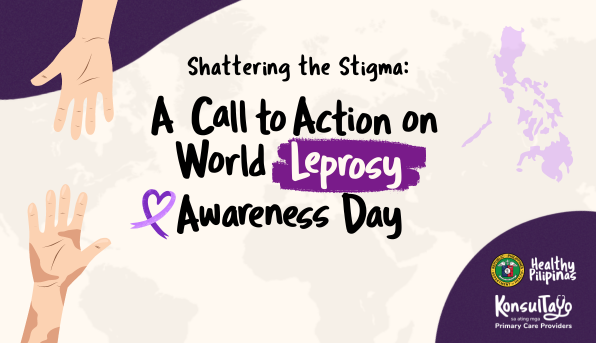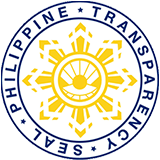
Every year on the last Sunday of January, the Philippines joins the global community in observing World Leprosy Day. This day serves as a crucial reminder to raise awareness about this chronic infectious disease, dispel myths and misconceptions, and advocate for the rights and well-being of individuals affected by leprosy.
While the Philippines has made significant strides in leprosy control over the past decades, bringing the national prevalence rate down to less than 1 case per 10,000 population, the fight against this disease is far from over. Pockets of high endemicity persist, particularly in remote and marginalized communities. Additionally, the stigma associated with leprosy remains a formidable barrier to early diagnosis, treatment, and social integration.
The Philippines continues to stand strong in its fight against leprosy, a chronic infectious disease that, while curable, unfortunately still carries the burden of stigma and misinformation. World Leprosy Day serves as a vital beacon, illuminating the journey toward a Leprosy-free Philippines while reminding us of the crucial steps we must take together.
Understanding Leprosy: Beyond the Myths
Leprosy, also known as Hansen’s disease, is caused by the bacterium Mycobacterium leprae. If left untreated, it primarily affects the skin and peripheral nerves, leading to sensory loss, weakness, and deformities if left untreated. However, the disease is curable with multidrug therapy (MDT), and early detection is key to preventing disability and complications.
One of the biggest challenges in leprosy control is the persistent stigma surrounding the disease. Misconceptions about its contagiousness and its association with physical deformities often lead to discrimination and social exclusion. It’s crucial to remember that leprosy is not highly contagious, especially with early diagnosis and treatment.
Beyond Numbers: The Human Costs of Leprosy
The statistics, though important, only tell part of the story. Each case of leprosy represents a person grappling with not just the physical impact of the disease but also the heavy weight of societal prejudice. The lingering stigma around leprosy often leads to social isolation, employment discrimination, and a denial of basic human rights. These burdens can be even more pronounced for women and children affected by the disease, exacerbating existing vulnerabilities.
Combating the Tide of Misinformation:
Sadly, myths and misconceptions about leprosy remain prevalent. Fear-mongering about its contagiousness and outdated notions of its incurable nature continue to fuel discrimination. It’s imperative to debunk these falsehoods and emphasize the crucial fact that leprosy is not highly contagious, especially with early diagnosis and treatment. The multidrug therapy (MDT) provided by the Department of Health and organizations like the Philippine Leprosy Mission is incredibly effective and can halt the progression of the disease, preventing disability.
Breaking the Chains of Stigma: A Call to Action
World Leprosy Day serves as a powerful platform to advocate for the following:
- Increased awareness and education: Raising public awareness about leprosy through campaigns, community dialogues, and media engagement can dispel myths and misconceptions, fostering a more understanding and inclusive society.
- Early diagnosis and treatment: Encouraging individuals to seek medical attention if they experience symptoms like pale patches on the skin, numbness, or muscle weakness is essential for early diagnosis and timely intervention.
- Accessibility of MDT: Ensuring the availability and accessibility of MDT in all healthcare facilities, including rural areas, is crucial to ensuring effective treatment for all patients.
- Combating discrimination: Implementing anti-discrimination laws and promoting social inclusion initiatives are vital to empower individuals affected by leprosy and foster a more accepting society.
- Supporting affected individuals: Providing psychosocial support, vocational rehabilitation, and economic opportunities can help individuals affected by leprosy rebuild their lives and integrate into the community.
The Role of Organizations in the Fight Against Leprosy
Several organizations play a crucial role in leprosy control in the Philippines. Through its National Leprosy Control Program, the Department of Health (DOH), through its National Leprosy Control Program, spearheads nationwide efforts for early detection, treatment, and rehabilitation. Additionally, non-profit organizations like the Philippine Leprosy Mission, Inc. (PLM) work tirelessly to provide comprehensive care, support, and advocacy for individuals affected by leprosy and their families.
A Collective Responsibility: Towards a Leprosy-Free Philippines
World Leprosy Day is a call to action for all Filipinos. From healthcare professionals and policymakers to community leaders and individuals, everyone has a role to play in breaking the chains of stigma, ensuring access to quality healthcare, and promoting social inclusion for those affected by leprosy. By working together, we can create a future where leprosy is no longer a source of fear or discrimination, but a disease that can be effectively managed and prevented, paving the way for a truly leprosy-free Philippines.
Let us remember that leprosy is not just a disease; it’s a human story. Let us choose compassion, understanding, and action, not stigma and discrimination. Together, we can build a world where everyone affected by leprosy can live with dignity and hope.
References:
- World Health Organization – Leprosy Elimination: https://www.who.int/news/item/17-07-2023-who-technical-guidance-on-interruption-of-transmission-and-elimination-of-leprosy-disease
- The Leprosy Mission International: https://www.leprosymission.org.uk/
- TedTalk: “Ending the Stigma of Leprosy” by Richard O’Barry: https://m.youtube.com/watch?v=l4V31iXtrWo
- Department of Health – National Leprosy Control Program: https://doh.gov.ph/leprosy-control-program
- Philippine Leprosy Mission, Inc.: https://leprosy.org.ph/
World Health Organization – Leprosy: https://www.who.int/data/gho/data/themes/topics/topic-details/GHO/leprosy
Related Posts




